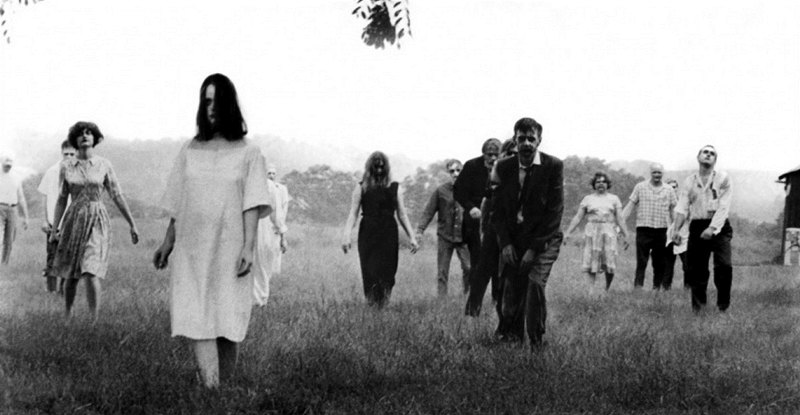The toughest movies for me to review are the ones I know I’m supposed to like, but which somehow leave me feeling just a little flat. “Enchanted April” is one of those movies. It features intelligent dialogue, solid acting, and superb scenery. It also earned three Academy Award nominations–for Best Supporting Actress (Joan Plowright), Best Costume Design (Sheena Napier), and Best Adapted Screenplay (Peter Barnes). But there wasn’t much enchantment for me, and with B-actors the facile plot would probably stand out more than it does as being extremely undernourished.
If it has a Masterpiece Theatre quality, it’s because “Enchanted April” was made for British TV and then well-produced for U.S. theatrical release. The place is southern England, the time, shortly after World War I. And the plot? Well, there’s not much in the way of conflict or tension. An older woman (Josie Lawrence) who feels ignored by her husband and dissatisfied with her life sees an ad in the newspaper for those who “appreciate wisteria and sunshine” to rent a castle by the sea near San Salvatore, Italy. The thought grabs hold of her and with excitement she does something daring, for her. After all, this is a woman so timid that she can’t even muster the courage to confront her writer husband (Jim Broadbent) about his well-known indiscretions. She approaches a neighbor woman whom she also suspects of suffering from the same malady as she, and with a husband (Alfred Molina) who’s just as self-absorbed and distant from her. Through persistence, she manages to convince her new friend (Miranda Richardson) that they should grab the brass ring of opportunity.
The film’s biggest social statement comes when one of the women literally sticks her foot in the door when the owner of the castle for rent sees they’re “merely” women and is ready to dismiss them. But they will have what they set out to acquire, and the women’s determination marks the biggest believable growth among all the characters–which is to say that the physical distance the characters travel is greater than the emotional or intellectual journeys that any of them make. Therein lies the chief fault of “Enchanted April.” We’re to believe that the women’s act of determination leads to the acquisition of a summer castle and causes both husbands to look at them differently. It’s all too easy, though, when the two husbands and the owner come to that castle too and intrude on what was supposed to have been a “girls only” holiday with the two women and two others they took on because they needed two more to share the rent. Two similar women with two dissimilar ones was supposed to create an interesting juxtaposition, but even here there isn’t enough done with the characters to make them breathe. A grand dame older than they (Plowright) is a hilarious name-dropper of all her literary acquaintances and as fussy as they come, but nothing too confrontational happens. Same with a much younger society woman (Polly Walker) who’s fed up with all the male “grabbers” out there and just wants to spend time lying in the sun with women who aren’t grabbers. And the owner (Michael Kitchen) completes the cast of men intruding on the space of women who try to create their own refuge away from the men. But whatever feminist theme exists here seems subverted by the men’s quick reinsertion into their lives and an “all’s well that ends well” trajectory.
Which is to say that for all the fine performances I found myself thinking that “Enchanted April” not only lacked enchantment–it also came darned close to feeling a little bland, and those are the toughest films to write about. They’re not badfilms, and you can appreciate the gorgeous scenery of Portofino, Genoa, and Liguria as well as the actor’s nuanced performances. But the truth of the matter is that beyond the nuance that these talents bring to the table, there’s not much more to be found. The women vacation, they loll about, men join them, and the castle itself serves as the denouement.
Prior to this 1992 film, director Mike Newell’s credits were mostly television, and while he would go on to handle such complex narratives as “Harry Potter and the Goblet of Fire” and “Love in the Time of Cholera,” he matches the script’s minimalism with slow pacing and segue shots that rely heavily on close-ups. Occasionally those shots are interesting, as when foreshortened candles seem tall as one of the characters, but for the most part Newell frames each shot like a tourism poster, and there are plenty of characters lolling about to reinforce the notion of an extended holiday. But for enchantment? I found myself charmed more by the old “Ladies in Lavender” (2004) and the way that magic was introduced into their drab lives.
Video:
“Enchanted April” is presented in 1.85:1 widescreen and enhanced for 16×9 television monitors. It’s a highly visual film, and thankfully the colors are vivid and fully saturated, there’s a nice amount of detail for a DVD, and you’ll see very little grain.
Audio:
The audio is a decent Dolby Digital 5.1 Surround in English that delivers some nice ambient sound through the surround-sound speakers and offers a clarity that we need for a talky film like this.
Extras:
The only bonus feature is a commentary by director Newell and producer Ann Scott, who do a decent job but, in the end, can’t convince me that my take on the film is somehow misguided.
Bottom Line:
Maybe if the word “enchanted” wasn’t in the title I would have felt differently, but there are so many well-acted, well-filmed movies that charm, I found myself wondering why this one didn’t.


